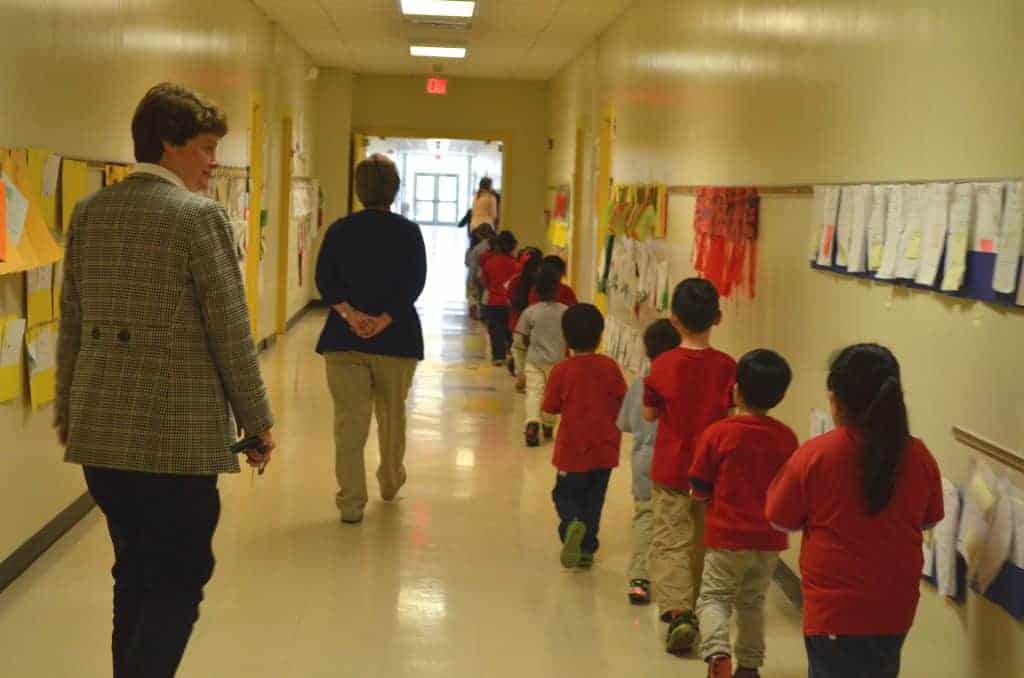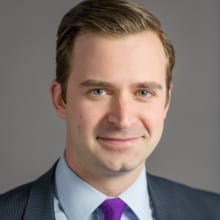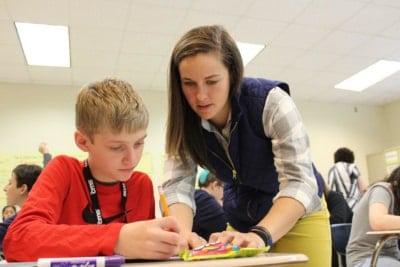
Principals, depicted in popular culture, tend to fall into two categories.
There is Mr. Belding, the beloved, fatherly figure from ’90s television show Saved by the Bell, who nurtures his students and occasionally disciplines them in an aw, shucks kind of way. And then there is Principal Rooney, the spiteful buzzkill out to ruin Ferris Bueller’s perfect day off.
And while it is easy to laugh at Mr. Rooney careening through a neighborhood to catch kids playing hooky, the underlying message is telling. Principals may make for easy Hollywood archetypes, but most people have little idea of the complex responsibilities of school leaders.
“We’ve not looked at the role of principal as anything more than the old school marm. The one where you send the child who’s undisciplined,” says state Rep. Craig Horn (R-Union), who chairs the House committees on K-12 education and education appropriations. “We’ve taken principals for granted. Shame on us. The schoolhouse of today is not the schoolhouse of 20 or 50 years ago.”
The role of the principal is evolving, and North Carolina is struggling to keep up.
“Principals can no longer function simply as building managers tasked with adhering to district rules, carrying out regulations and avoiding mistakes,” says a report from the Wallace Foundation, a national nonprofit that promotes school leadership. “They have to be (or become) leaders of learning who can develop a team delivering effective instruction.”
But what does that mean for principals in this state’s schoolhouses?
“They need to be the leaders,” says Shirley Prince, executive director of the North Carolina Principals’ and Assistant Principals’ Association. “A principal cannot abdicate that role.” Leadership, she says, means more than pushing paper or being the disciplinarian. Principals must build an atmosphere that fosters positive relationships, a culture that Prince says should be focused on “trust and shared purpose and high expectations.”
But North Carolinians—from legislators who set policy and appropriate money to parents who pack lunches and attend PTA meetings—have fallen back on archetypal depictions of principals, relying on outdated assumptions of how the state ought to select, train, pay, and support the leaders of its public schools.
“In my view, the most critical adult in the school building is the principal,” Horn says. “The principal is the one who hires or fires the teachers. The principal is the one who sets the tone in the school.
“Most of us for the last several years, maybe many, many years have not looked at the schoolhouse in the bigger picture, in its entirety.”
A Critical Look
In 2015, the advocacy group BEST NC (the acronym stands for Business for Educational Success and Transformation), noticing the national evolution in principal preparation programs, sought to understand how North Carolina trained its schoolhouse leaders. “At the time,” a 2018 BEST NC policy brief says, “the research base on principal training within North Carolina specifically was nascent, and publically-available statewide data almost non-existent.”
Working with a Duke University graduate student, BEST NC commissioned research into the state of principal prep in North Carolina. The trends were alarming.
BEST NC found that teachers self-selected into the principal profession, and most principal prep programs in the state accepted nearly 100 percent of applicants. In other words, any teacher who decided to be a principal and could pay the tuition would be accepted—even if he or she was not well suited to lead a school. “Programs are incentivized, therefore, to offer the least expensive, fastest option,” the brief explains. “Most principals enter the profession in North Carolina without any on-the-job training,” which is a stark contrast to leadership roles in virtually all other professions. North Carolina does not require a full-time residency for principal candidates to get hands-on learning in a leadership role.
The BEST NC report points out that these challenges are not unique to North Carolina, and studies since the 1980s have indicated similar challenges across the nation. “Despite the critical importance of the role,” the policy brief says, “a thoughtful approach to school leadership training is simply not the norm.”
The report’s conclusions were sobering.
“Our traditional principal prep programs were not really providing the quality of principals that superintendents felt they needed to face the challenges we face,” Prince says.
Based on the new research, and behind BEST NC’s advocacy, the state legislature allocated $1 million in 2015 for the Transforming Principal Preparation program (TP3), a competitive grant program to support high quality principal preparation initiatives across the state. By using state funds for the grant, lawmakers could incorporate the pillars and best practices of successful research-based principal prep programs nationwide into TP3. These included proactive recruitment, high standards for entry, rigorous coursework, a full-time residency, and a focus on partnerships, especially in high needs schools.
The North Carolina Alliance for School Leadership Development (NCASLD) was chosen to make the grant awards and manage the TP3 process. In 2016, the group awarded the first TP3 grant to NC State University to expand its successful Northeast Leadership Academy program, to also serve Durham schools with a similar model.
That same year, the General Assembly increased recurring TP3 funding to $4.5 million, and NCASLD awarded grants to five additional principal preparation programs at Western Carolina University, High Point University, a Sandhills regional consortium, UNC Greensboro, and NC State. The programs are highly competitive with an appreciably lower acceptance rate than North Carolina principal prep programs have historically held—a third of applicants rather than nearly all.
Today, those six programs serve roughly 120 principal candidates sponsored by 46 school districts across the state. TP3 invests an average of $69,000 in each candidate’s training, and that number doesn’t count the private philanthropy and local district fund-matching dollars often included.
“We feel really good about what’s happening in those programs,” Prince says. “There’s a lot of transformational activity going on right now.”
“Elbow Learning”
When UNC Greensboro associate professor Kimberly Kappler Hewitt and her colleagues first learned about the TP3 grant program, they were excited about the ways it could enhance their work on educational equity in rural Piedmont school districts.
“We jumped at the chance to apply,” she recalls.
Principals, Hewitt says, should be “the lead learner in a school,” but often, they have not been given the training or support to be as effective as they should be. This is especially the case in the nine rural districts with which Hewitt works in central North Carolina. “A lot of the educational leadership literature is focused on urban context, which is important,” she says. “But there is a dearth of really good research on rural educational leadership.”
Schools in these communities have seen an influx of immigrant students, particularly Latinx students, during the last two decades.
“That has really required schools to shift how they serve students so that they’re serving all of the students and not just some,” Hewitt says. But without effective principal preparation programs, many of the leaders in rural schools were ill equipped to handle new challenges of an evolving role.
North Carolina’s leaky teacher and principal pipeline exacerbated those challenges, as the most talented leaders often left for roles in larger, better-paying school systems. “Those problems are particularly acute in rural areas,” Hewitt says. “Programs like ours that try to work with districts to create a leadership pipeline, where districts can grow their own leaders, are really, really important.”
The program Hewitt and her colleagues launched in response to the TP3 call for proposals is called PPEERS: Principal Preparation for Excellence and Equity in Rural Schools. It started serving a cohort of 19 school leaders from nine rural Piedmont districts at the beginning of 2017; those future school leaders finished their program in June 2018. Now equipped with their masters degree in school administration and principal license, the members of the PPEERS cohort are obligated to work in their sponsoring districts for at least four years.
PPEERS includes a 10-month, full-time internship, during which the candidates work closely with an existing principal in one of the sponsoring district’s schools. Hewitt calls this time “elbow learning.”
“Our interns are at their mentor’s elbow,” she explains, “learning from them, shadowing them, reflecting with them.” A component of this internship includes “think alouds,” in which the mentor shares with the principal candidate some of the challenges he or she is facing, and how to process them en route to a decision. As the PPEERS internship progresses, the future school leader takes on progressively more duties in an effort to make the experiential learning worthwhile.
“There is this scaffolding that’s in place, and our interns take on more and more responsibility as time goes by,” Hewitt says. PPEERS has received state funding for at least four more years to continue the principal prep program, which translates into two cohorts of 20 principal candidates.
In addition to the hard skills required to manage a school, Hewitt is clear that principal prep must focus on building collaborative, productive relationships across the school. “Gone are the days when teachers were supposed to go in their classrooms and close their doors and do whatever they want. These are the days when we really are asking educators to work together collaboratively, to have shared responsibility of student learning,” she says. “That’s a different way of operating for many educators.”

